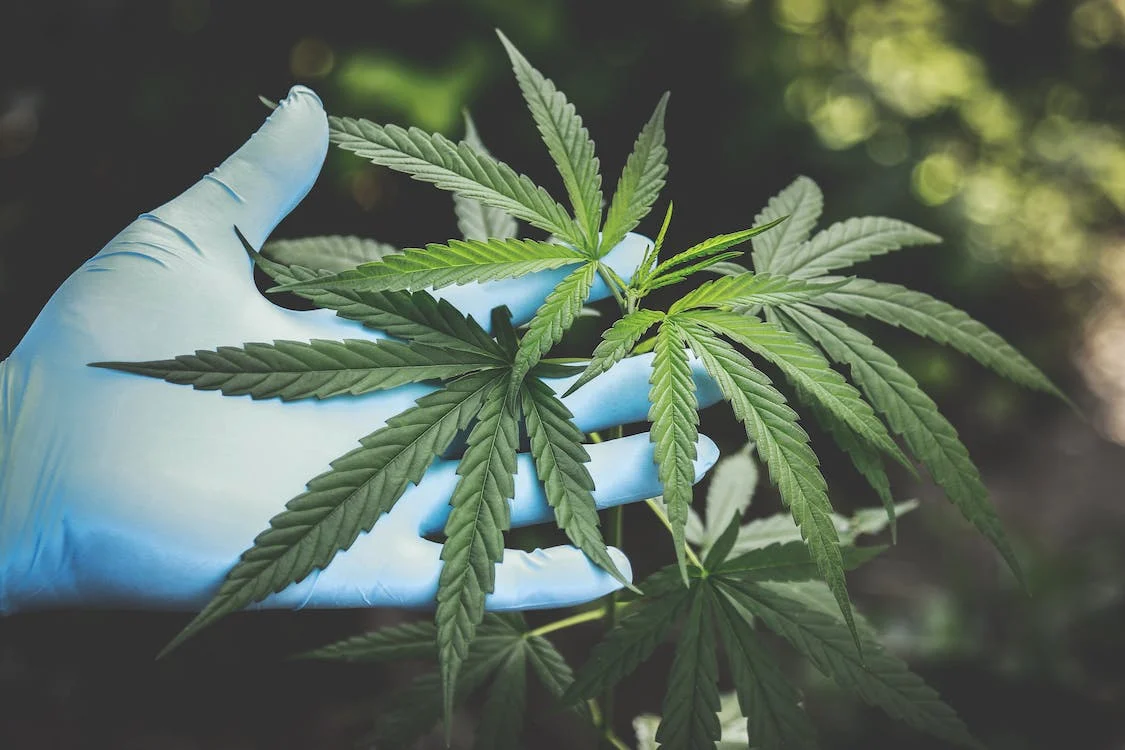Terpenes are fragrant molecules that may be found in many plants, but because cannabis plants have high terpene concentrations, many people frequently associate them with cannabis.
Many plants, including lavender, pine, cannabis, fresh orange peel, and many others, have distinctive scents from their fragrant chemicals. Terpenes work together to give most plants their distinctive scent. These terpenes shield plants in the wild against grazing animals and contagious pathogens. Terpenes, however, might also help a person’s health in some way. Scientists are looking more closely into these potential advantages as cannabis laws become less restrictive. As a result, they have found some of the terpenes that are found in nature or can be used advantageously. So, here are some of the most common terpenes that are found in nature:
1. Myrcene
The most prevalent terpene in some cannabis strains is myrcene, which is also naturally present in various fragrant foods and plants, including mangoes, lemongrass, basil, and cherry pie. A tangy, earthy, and somewhat grape-like flavor best describes myrcene. Mangoes are the food that myrcene is most commonly found in, besides cannabis. It is a type of hop used in beer and is known for its intense clove fragrance.
You can find the sobering effect of terpenes as it is the terpene that is most prevalent in cannabis, we must start with it. Actually, the amount of myrcene in a cannabis plant determines whether it will have a calming or stimulating impact similar to that of an indica or a sativa strain. Myrcene also has potent anti-inflammatory and analgesic (pain-relieving) properties.
2. Alpha-Pinene
The most frequent terpene found in nature is alpha-pinene. It is present in pine trees and provides some cannabis strains, a fragrance resembling pine. Other plants like rosemary and basil also contain it. It contains antimicrobial effects, has been used as a bronchodilator to treat asthma and may improve memory.
These closely related terpenes give forth a typical piney and resinous fragrance, as one might anticipate. You may discover this particularly pleasant-smelling terpene everywhere in nature, including in pine trees, orange peel, and herbs like rosemary, basil, and parsley.
Asthma and other respiratory inflammatory diseases can be treated with pinene. Although using a vaporizer or vape pen, which doesn’t burn any plant material, is advised, inhaling pinene-rich cannabis may help relieve inflammation in the lungs and airways.
3. Geraniol
Many users of this tasty terpene say it has notes of florals and new grass in addition to sweet stone fruits like peaches and plums. Although it is frequently used in aromatic lotions and bath products because of its fragrant properties, research indicates it also has potent antioxidant properties.
The essential oils of various aromatic plants include geraniol, terpene alcohol, with significant commercial importance. One of the essential molecules in the flavor and scent sectors, it is frequently found as a component in consumer goods made by these sectors. Geraniol has a nice aroma in addition to having insecticidal and repellant qualities. It is also a natural pest management method with low toxicity. A novel class of cancer chemoprevention drugs called geraniol has been proposed. Investigations have also been made into biological processes such as antibacterial, antioxidant, anti-inflammatory, and some vascular effects. Researchers and formulation scientists are interested in the way geraniol affects the penetration of transdermal medication administration.
4. Humulene
A monocyclic sesquiterpene known as humulene has long been employed in holistic Eastern medicine. Most frequently, one of the terpenes found in the cannabis plant was called after the humulus lupulus. Pinene and humly hoppy flavor, also gives sage, ginger, and ginseng their spicy, acrid sting.
However, it is believed that humulene supports effects that reduce appetite. Humulene’s potential to encourage weight loss, as an anti-inflammatory, to treat allergies, and as a target to inhibit tumor growth are among the major research areas. Furthermore, most often found in hops, which give many beers their earthy, woodsy, and spicy flavors, this particular terpene is unique. According to studies, humulene has antimicrobial properties and aids in appetite suppression and tumor growth prevention.
5. Linalool
Terpenes give many plants, including cannabis, their distinctive flavor, and scent. They have long been utilized in medicine. A monoterpene called linalool is present in more than 200 plants besides cannabis, such as aromatic herbs, spices, flowers, citrus, mints, rosewood, and even birch trees.
This terpene is also present in fresh lavender and is possibly the one most linked to the traditional “marijuana fragrance.” As well as providing calming and soothing effects, it is believed to aid in the fight against anxiety and depression. Early research suggests that linalool may be able to counteract the memory loss and cognitive decline brought on by Alzheimer’s disease.
However, there are various uses for linalool, which is extensively utilized and abundant in nature. It is renowned for its calming effects and capacity to reduce high-stress levels to nearly normal levels. It is commonly utilized in soap, perfumes, cosmetics, and aromatherapy. Linalool is even used as an all-natural flavor by some manufacturers of flavored beverages.
Meanwhile, Linalool has a remarkable therapeutic ability in conventional aromatherapy to heal skin burns without leaving scars. It has documented sedative, depressive, anxiolytic, and immunological potentiating actions. It possesses local anesthetic effects comparable to menthol and procaine. One of the main components of the cannabis plant’s essential oils is thought to be linalool.
Conclusion
Terpenes, the most important class of natural compounds, play several roles in mediating harmful and advantageous interactions between organisms. Messages about the presence of food, mates, and enemies are sent to conspecifics and mutualists by various plants, animals, and microbes to protect them from predators, pathogens, and rivals. They are organic chemical substances found in some plants and animals. They’re responsible for giving many species of vegetation their distinctive smells, fragrances, and even colors. Terpenes are the compounds in cannabis that give some strains their distinctive flavor or aroma.

